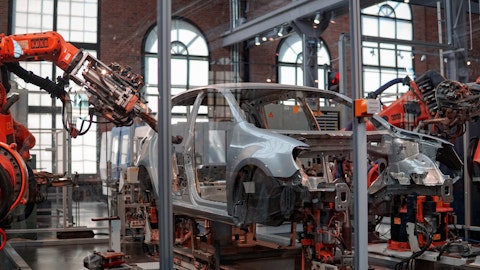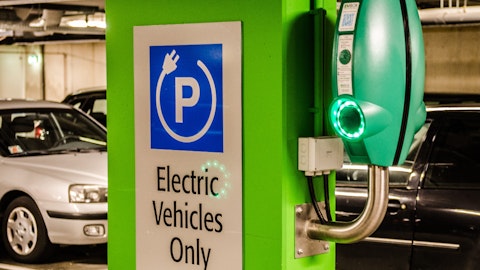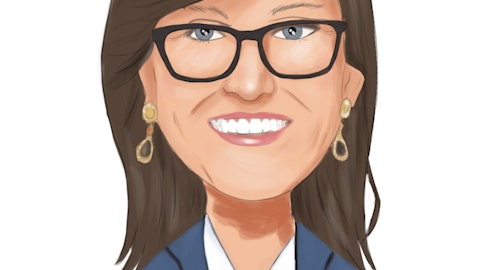Mike Shlisky: Okay, okay. I can follow-up with that separately. Also, you didn’t mention it. You €“ as far as your liquidity goes, you haven’t filed your 10-K or 20-F for the year, but do you anticipate that document having a going concern causing it? Or do you think, with your orders, you’ve got a good outlook for ample liquidity to fund the business throughout the entire 2023 year?
Daniel Barel: Yes. So listen, we had $154 million on the balance sheet at the end of 2022, and we have no debt. So as we mentioned, like you just said on the shareholder, we’re targeting a non-GAAP operating expense of between $70 million to $75 million for 2023, right? So that’s quite straightforward and if you keep in mind that our model is very capital-light. So once we begin SOP, we believe that the vast majority of capital-intensive cash burn is over for the foreseeable future. So therefore, as for additional capital, we carefully watch the market condition explore the option for raising debt or equity capital in the right phone and time. But that’s based on the progress of our business cycle and need.
Mike Shlisky: Got it. And maybe last one for me, we had the NTEA Show last week, booth looked great, looked pretty crowded in the booth. Could you maybe give us a sense as to how that might have gone, in your view and your fleets coming in with some interesting interest there or any other use cases that came about as folks came in and out of your booth over at that show last week? Thank you.
Daniel Barel: Yes. It has been €“ the thing quite a show, it will be very busy, as you just mentioned. We have seen a lot of interest in EV in general, and in our products in particular. We see interest from large fleets, logistic companies and e-commerce as well as from dealers and also OEMs. So at €“ in the risk of repeating myself, I would say that it is extremely important for us to deliver those first deliveries spot on, right, and to make sure that our deliveries are successful on-time, on-target, on-TCO, to those customers and prioritizing those who ordered and are waiting for the vehicles as we grow our ordering book more and more. We take very seriously our commitment to deliver vehicles to our customers.
Mike Shlisky: Fair enough. Thanks a lot. Thank you.
Operator: Thank you. We will now take the next question. It comes from the line of Andres Sheppard from Cantor Fitzgerald. Please go ahead. Your line is open.
Andres Sheppard: Hi. Good morning everyone or good afternoon. Congrats on the quarter. Thanks for taking our question. Wanted to maybe start off by just following up on that question about liquidity, right? So, $154 million funded through or into commercialization. I am wondering, how are you thinking about your capital needs following that, right, particularly as you begin to ramp up orders and ramp up production. How are you thinking about future capital need plans after entering commercialization? Thank you.
Daniel Barel: Yes. Hi. Good morning. Right. Again, so like you said, there is $154 million on the balance sheet at the end of 2022, and we don’t have debt. So, yes, we think we have sufficient liquidity to take the P7 platform into commercialization and continue to advance the other commercial projects. We would be looking, I mean in the market, and we would be exploring opportunities and options for raising debt and equity capital. But it needs to be in the right form and time. And that’s, again, we are going to base this on the business cycle and needs. As we go further into the year, we will have more visibility into the order group, the production ramp-up, etcetera?



